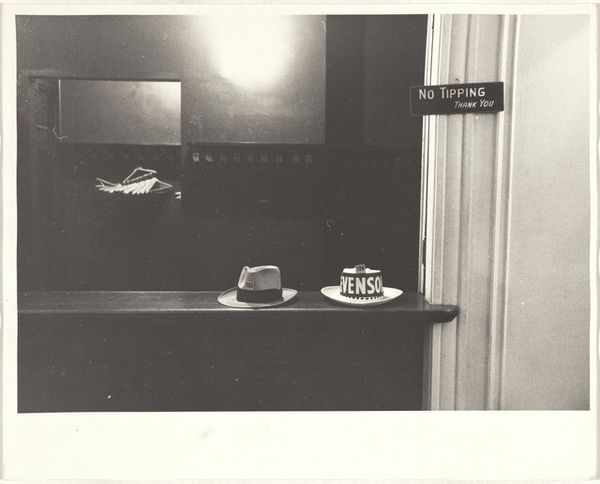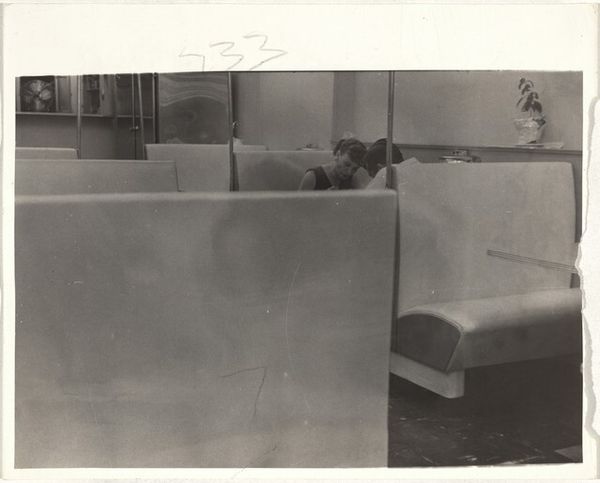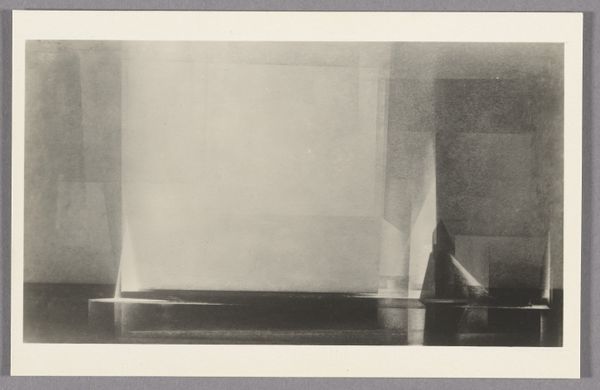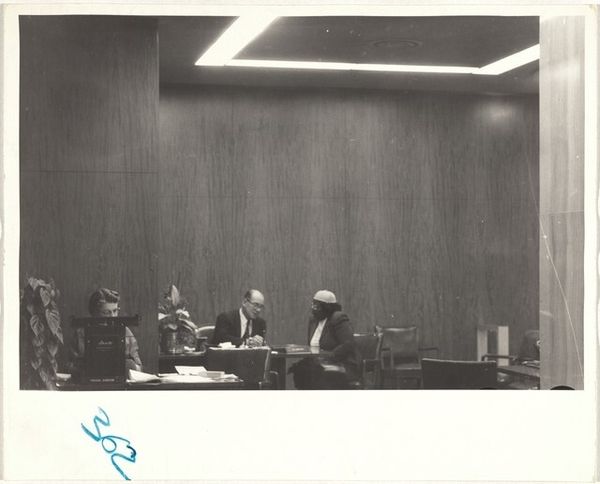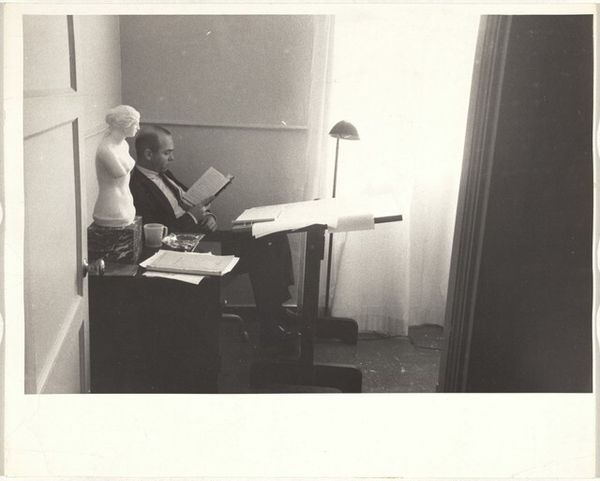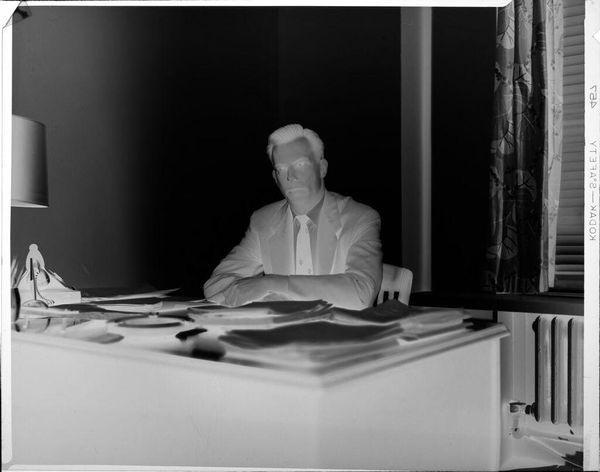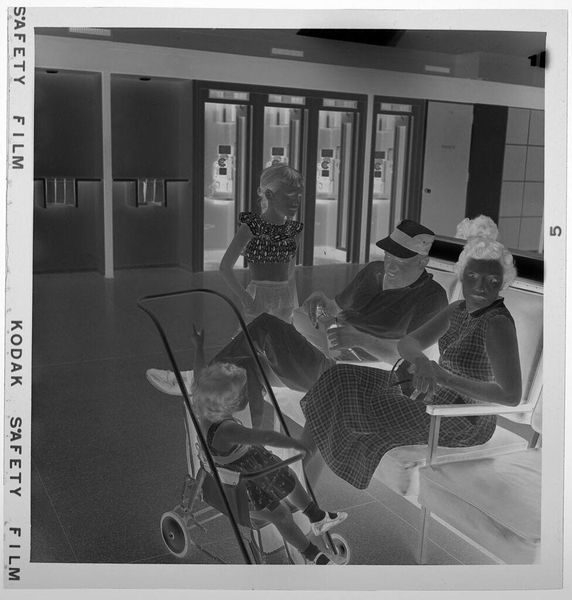
Dimensions: sheet: 20.3 x 25.3 cm (8 x 9 15/16 in.)
Copyright: National Gallery of Art: CC0 1.0
Editor: Robert Frank's gelatin silver print, "Man in Boarding House Lobby—San Francisco," created in 1956, strikes me as melancholic. The composition is so rigidly divided by the window frame and signage, isolating the figure within. What compositional choices stand out to you? Curator: Indeed. The stark geometric divisions of the window, signage, and internal architecture present a layered pictorial space. Frank manipulates tonal contrasts brilliantly here; the dark foreground throws the lit interior into sharp relief. Notice the strategic placement of the light source. How does this internal illumination influence your perception? Editor: The glowing sign emphasizes the loneliness even more because its promise of ‘desirable rooms’ feels ironic in the context of the isolated man. Curator: Precisely. Semiotically, the illuminated text acts as a focal point, juxtaposed against the somber figure. The graininess, typical of Frank’s style, introduces a vital element. It reinforces the image’s immediacy, seemingly unfiltered observation, disrupting any idealized sense of "desirability." Does that heightened contrast enhance the visual narrative? Editor: It does! I hadn't considered how the grainy texture contributes to that rawness. Curator: Considering Frank's style within the context of post-Impressionism and modernism allows us to view the fragmentation as not just documentation, but as an emotional statement about the subject's position. The artist utilizes visual architecture to define this loneliness through contrast and texture. What elements are most potent now that you reconsider its visual framework? Editor: Now I see the window and neon sign as both framing and isolating the subject. It's like the composition itself enacts a kind of separation, mirroring the loneliness of the man. Curator: Indeed, by recognizing and naming the formal devices at play, we understand how a photograph captures both an external and psychological space, making it more than just documentary evidence. It is a profound experience framed by material choices.
Comments
No comments
Be the first to comment and join the conversation on the ultimate creative platform.
